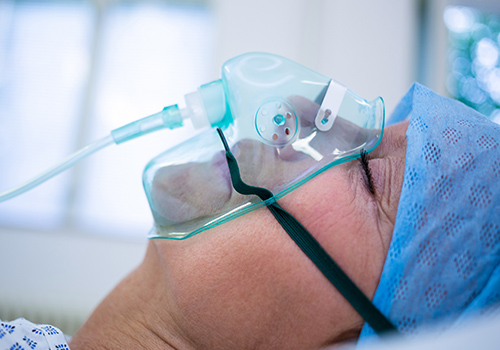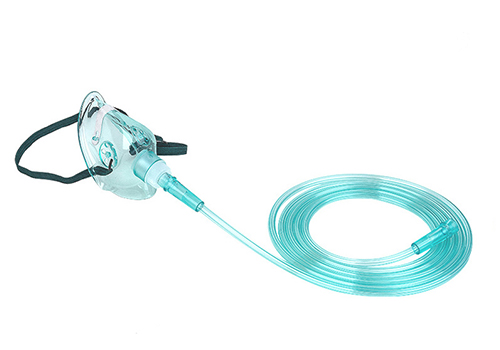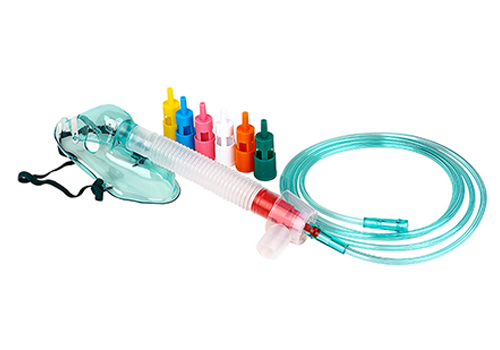Oxygen therapy is commonly used on the majority of patients admitted the ambulance or hospital and ICU with respiratory distress. Indications for oxygen administration include increased working of breathing, hypoxemia, and hemodynamic insufficiency. The general purpose of oxygen therapy is to maintain sufficient tissue oxygenation while minimizing cardiopulmonary work. Indications of inadequate oxygenation include dyspnea, cyanosis, tachypnea, accessory muscle work, tachycardia and hypertension. Oxygen administration can also be used for chronic administration for patients with advance cardiopulmonary disease and can be utilized during diagnostic assessment.

Nowadays there is a wide range of oxygen delivery devices available for patients to choose. The choice of oxygen delivery devices depends on the patient’s oxygen requirement, efficacy of the device, reliability, ease of therapeutic application and their acceptance. Clinical assessment and performance ultimately determine how and which device should be selected despite the fact that design plays an important role in selection of these devices.
Oxygen delivery devices range from very simple and inexpensive designs to more complex and thus expensive ones. The type of devices that are selected often determine the consistence or preciseness of the percentage of oxygen that is being delivered to the patient. Oxygen can be delivered through low flow or high flow systems, with optional choices of humidity and reservoir. Oxygen delivery effectiveness should be monitored by arterial blood gas analyses, oxygen saturation monitoring, and clinical assessment since oxygen can be considered toxic if percentages are delivered greater than 60% and, in some cases, may diminish ventilator drive and create life threatening hypercarbia. It can also cause absorption atelectasis by washing out nitrogen gas when delivered in high concentrations.
There are generally three basic styles of oxygen delivery devices based on their design: low-flow, reservoir and high-flow. Oxygen systems can be divided into those indicated for low oxygen (<35%), moderate delivery (35%-60%) or high delivery (>60%) regarding the inspiratory oxygen fraction (FiO2) range. Some devices can deliver a wide range of oxygen percentages. The two most important questions that the respiratory therapist must address when selecting an oxygen delivery device or oxygen mask are how much oxygen the mask can deliver and weather the FiO2 delivery is consistent or can it vary with changing respiratory patterns.
We will now review the different oxygen delivery masks, clinical indications and utilization.
Utilization of Nasal Cannula - Low-flow Delivery
Low-flow oxygen delivery systems consist of nasal cannula, nasal catheters and transtracheal catheters. They are designed to provide supplemental oxygen that is often less than the patient’s total minute ventilation. Because the patient’s minute ventilation exceeds flow, the oxygen delivered by the device will be diluted with ambient air and thus the inspired oxygen delivery is less than anticipated.

The standard nasal cannula delivers an FiO2 of 24-44% at supply flows ranging from 1-8 liters per minute (LPM). The formula is FiO2 = 20% + (4 × oxygen liter flow). The FiO2 is influenced by breath rate, tidal volume and pathophysiology. The slower the inspiratory flow, the higher the FiO2; the faster the inspiratory flow, the lower the FiO2. A nasal cannula is not recommended for acute severe hypoxemia because the delivered oxygen percentage is very inconsistent. The patient’s upper airway acts as an oxygen reservoir for the nasal cannula. A humidification device is recommended for flows greater than 4 LPM to insure humidification of the dry inspired gas. Nasal cannulas are best used for patients who have relatively stable respiratory pattern, who require low oxygen percentage, or who are in need of supplemental oxygen during an operative or diagnostic procedure, or for home care uses.
Simple Oxygen Mask or Non-Rebreather Oxygen Face Mask – Reservoir Systems
Reservoir systems can gather and store oxygen during inspiration and exhalation. When patients’ minute ventilation flow exceeds the device delivery flow they can draw from the reservoir anytime. To increase the oxygen concentration delivered, often a mask reservoir is utilized. The volume of the oxygen face mask is approximately 100-300 cm3 depending on size. It can deliver an FiO2 of 40-60% at 5-10 liters. The FiO2 is influenced by breath rate, tidal volume and pathology. The face masks are also great alternatives for patients with nasal irritations or epistaxis or if they are strictly mouth breathers. A simple oxygen mask should be utilized for just a few hours because of the low humidity delivered and the drying effects of the oxygen gas. This device is best used for short-term emergencies, operative procedures.

The non-rebreathing oxygen face mask should be used when an FiO2 >40% is desired and for acute desaturation. It may deliver an FiO2 up to 90% at flow settings greater than 10 liters. This device is best utilized in acute cardiopulmonary emergencies where high FiO2 is necessary. It should be only used for less than four hours, secondary to inadequate humidity delivery and to variable FiO2 for patients who require a precise and high oxygen percentage.

Venturi Oxygen Mask or Aerosol Mask – High-flow Delivery
High-flow oxygen delivery systems provide a given oxygen concentration at a flow equaling or exceeding the patient’s inspiratory flow demand. An exact delivered FiO2 can be achieved if the delivered flow exceeds the patient’s total flow.
A Venturi mask can create high-flow enriched oxygen of a desired concentration as it mixes oxygen with room air. It produces an accurate and constant FiO2.The oxygen concentration level are typically set at 24, 28, 31, 35 and 40% respectively .The venturi mask is often employed when the clinician has a concern about CO2 retention or when respiratory drive is inconsistent. And it is often used in the COPD patient population where the risk of knocking out the patient’s hypoxic drive is of concern.

An aerosol generating device can deliver FiO2 from 21 to 100% depending on the set up. The desired FiO2 is selected by adjusting an entrainment collar located on top of the aerosol container and the flow is often set at 10 LPM. There’s a humidity device connected to the flow meter, and wide bore tubing connects this to the patient’s mask. Wide bore tubing and the reservoir bag are placed in line to act as an oxygen reservoir to ensure that an exact high FiO2 is delivered. This device adds water content to the patient and can assist in liquefying retained secretions. This oxygen delivery option is ideal for patients with tracheotomies because it allows for inspired air to be oxygenated, humidified, and even heated if necessary. They can be hooked up to an aerosol mask, tracheotomy mask, and even a T-piece. During inhalation, an aerosol mist should be seen coming from the mask or reservoir. To ensure accurate oxygen administration via this system, an oxygen analyzer should be used. This device can be used to ensure a precise oxygen delivery and also maintain humidification of artificial airways.

Optimizing outcomes of oxygen administration often depends on selecting the correct oxygen administration device. In selecting an oxygen delivery device, the respiratory therapist should include the following in their recommendation: the goal of oxygen delivery, the patient’s condition and etiology, and the performance of the device being selected. FirstCare offers all the oxygen delivery devices mentioned above. Email us at info@firstcaresolutions.com to get a free quote!





















 2755841275@qq.com
2755841275@qq.com 13159238790
13159238790